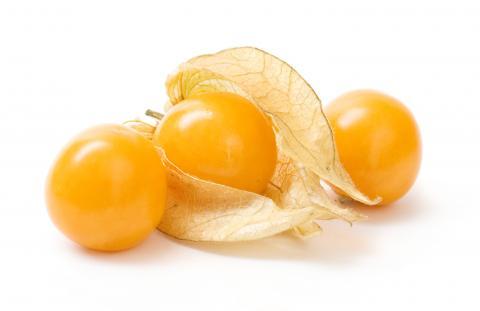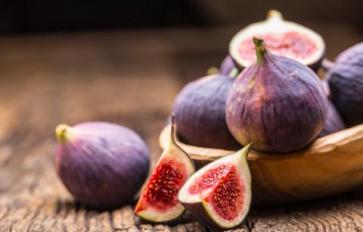
If you’re shameless about eating a pint of cherry tomatoes in the summer sun, you might consider including ground cherries in this year’s bounty. Though known by many a name—husk cherry, husk tomato, ground tomato, winter cherry, strawberry tomato, or cape gooseberry—the flavor of the ground cherry is like no other item you’ll sow in your garden. Call them what you may, ground cherries have now become a staple in my garden plan each year. Here are the top five reasons why.
5 Reasons to Grow Ground Cherries
1. Appropriately so, the “ground cherry” conveniently falls to the ground when it is ripe! Like its cousin, the tomatillo, the ground cherry fruit grows within a dainty little lantern-like husk. When the fruit of the ground cherry is ripe, the husk dries to a papery texture which then serves to protect the fruit from rapid expiration common of other fragile fruits and vegetables lying on the moist home of eager decomposers. When I go to harvest ground cherries, I simply give the bush a gentle tap or shake, and then gather up all the jewels I find on the ground.
2. The “cherry” part of the ground cherry name alludes to the delightfully pop-able nature of these magical, tropical-tasting fruits. Sweet and tart—much like a Bing cherry or cherry tomato—ground cherries are often described as tasting like a combination of tropical flavors like pineapple and mango with the more traditional flavor of a tomato and the slight bite of its tomatillo relative. You decide for yourself, but I find that the fruit sometimes even has a tangy little zip that complements a uniquely blueberry-like texture to the fruit.
3. The ground cherry is like the friend you can take to any party because they always make flattering companions. In other words, the ground cherry is adaptable: snack straight from the husk, gift to a neighbor in a pint container, toss in a salad or on a tomato-basil tart for a little sweet bite, mix with any fruit for a crumble/pie/cobbler, add ground cherries to salsa, chutney, tomato sauce, or follow one of my new favorite recipes for ground cherry jam. Some people may be averse to raw, fresh ground cherries, but cooked into a dish, ground cherries can add just the right tang without tasting so wonderfully strange and, well…ground cherry-like. To shift a friend’s perspective after eating a raw ground cherry, try out this ground cherry crisp recipe, for which the ground cherries can be cut with any combination of other fruits—apples, peaches, pears, blueberries, raspberries…
4. Ground cherries can be planted like tomatoes, grow without supports, and are the plant that keeps on giving! If you’re already planning to plant tomatoes, adding ground cherries into the mix is not too complicated. Plants do best 18-24 inches apart in direct sunlight with regular watering. Most ground cherry plants grow as wide as they are tall, and bear hundreds of fruit in a season. Plants may continue to produce fruits for several months, and ground cherries may keep for weeks in the husk in a cool, dry place, and also can be easily frozen (after removing the husk) to preserve for winter months.
5. One ground cherry plant may lead to more, voluntarily! If you plant a ground cherry plant this year, you may not have to next year. Since the fruit falls to the ground, and some is left to decompose, it’s possible that the seeds remaining in the soil may “volunteer” to sprout, given the right springtime conditions. When this happens with any plant, it brings me such joy! Observe your garden closely in the springtime…volunteers are a sign of strong and determined plants eager to serve you!
So, how and when to plant a ground cherry? There are several popular varieties of Psysalis pruinosa, or ground cherry. Look for seeds of the varieties like Aunt Molly’s and Cossock Pineapple. I prefer the Goldie variety, which produces a berry slightly larger than Cossock, and tastes like the golden rays of sunshine in which the plant loves to bask! Find more specific comparisons of ground cherry varieties here.
If you choose to purchase your own seed, start seeds inside (1/4-inch deep) six to eight weeks before the last frost in your area. If necessary, consult a guide to figure out your region’s frost date. Sow outside at the same time as tomatoes, about 2 feet apart, two to four weeks after last frost in moist, well-drained soil in a sunny location. Some folks like to cage them like tomatoes; some don’t, accounting for ground sprawl for which the plants are aptly named. For this reason, some prefer to plant them in raised beds. I appreciate having mine in a slightly raised bed to help visibility when harvesting the fruit. Ground cherries are not usually susceptible to bacterial, fungal, or viral diseases, but are susceptible to all the same pests as tomatoes, including cutworm, spider mites, whiteflies, and flea beetles. To protect against pests, water regularly, and use a cardboard or natural (hay) collar at the base of the plant. For more instructions on growing and sowing ground cherries, visit this site.
As you work out your garden plan, give ground cherries a space next to your tomatoes. One plant produces fruit for the duration of the summer, and kids love them for the sweeter flavor compared to cherry tomatoes. And, if you’re interested in saving seed for next year, follow these simple directions for self-sufficient gardening!








